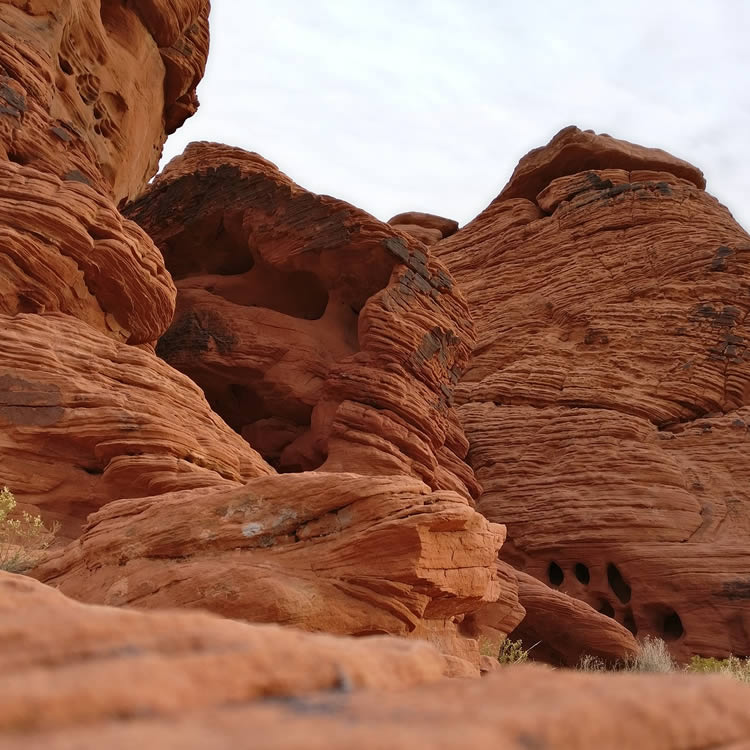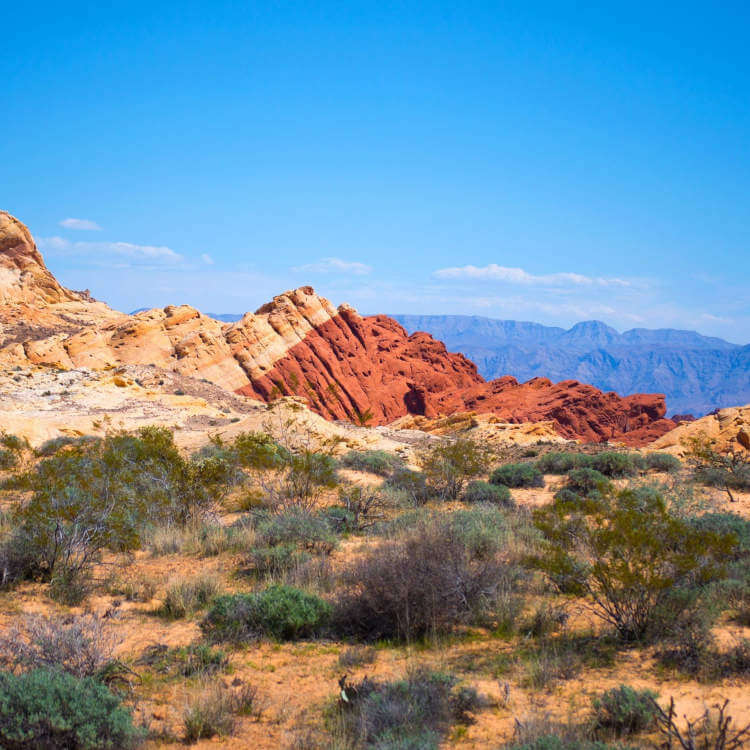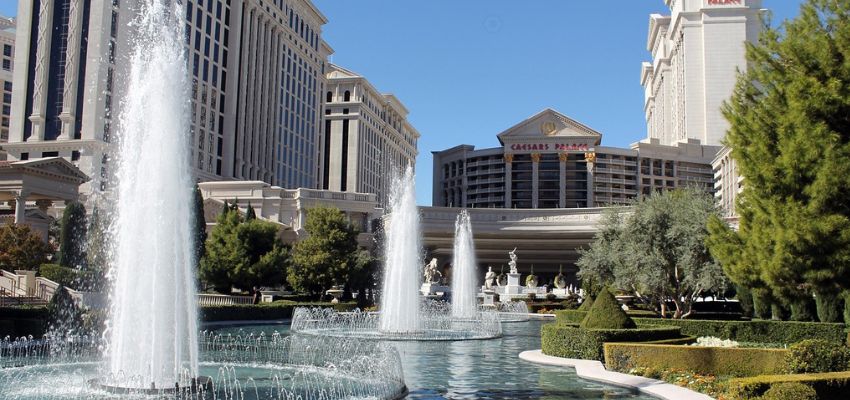7 Burning Reasons to Visit the Valley of Fire
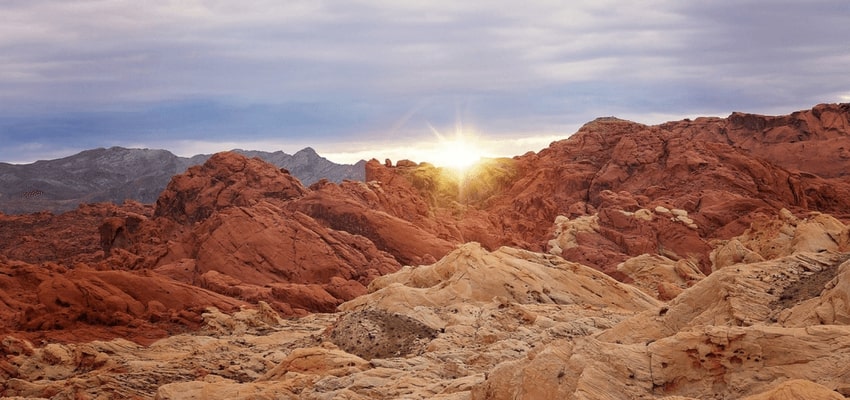
When you’re deep in the heart of Las Vegas and your idea of getting out into the “great outdoors” is heading to the Las Vegas Sands, it’s time to pack your bags and take a day trip beyond the city limits. Between the Grand Canyon, Red Rock Canyon, Death Valley, and the Valley of Fire, there’s no shortage of wild and wonderful landscapes to explore.
Can’t decide where to go? Here are 7 reasons why the Valley of Fire is a great choice:
1. It's close to Las Vegas
The Valley of Fire is just 50 miles northeast of the Strip – that’s only about an hour’s drive. If you’re looking to explore beyond the city limits but don’t have time for a longer adventure to the Grand Canyon, a trip to the Valley of Fire will have you back in Vegas on time for your evening plans.
Bonus: Even the drive to the Valley of Fire is stunning. Once you turn off the I-15 onto the Valley of Fire Highway, you’ll start seeing the iconic landscapes you’ve been promised.
2. It's full of history.
The Valley of Fire State Park was dedicated in 1935, making it Nevada’s oldest state park, but the area’s history actually stretches back for millenia. Since 300 BCE, the Valley of Fire has been home to numerous prehistoric civilizations, such as the Basket Maker people and the Anasazi Pueblo farmers.
FUN FACT: In addition to being Nevada’s oldest state park, it’s also the Silver State’s largest state park, covering an area of almost 36,000 acres.
In addition to fossils and archaeological artefacts, inhabitants of the Valley of Fire have left their mark in the form of petroglyphs, which were created by chipping the “desert varnish” off the surface of the Valley’s bright red stones in order to reveal the lighter sandstone underneath. Petroglyphs are abundant throughout the state park, and some are even as old as 3,000 years. The best places to see them are Atlatl Rock and (surprise) Petroglyph Canyon.
3. The landscape is epic.
The bright red formations of the Valley of Fire formed over the course of 150 million years through a complicated process of geological uplifting, faulting, and erosion. Why are they so red? Their characteristic hue comes from the iron oxide in the area’s sediment.
FUN FACT: When the sun shines on the red formations, they can appear as if they’re on fire – hence the name “Valley of Fire”!
4. It’s star-studded in more ways than one.
Not only does the Valley of Fire boast beautiful night skies, but it’s also a popular location for filming movies and television. You may have seen it in:
- The racing scenes in the 1963 flick Viva Las Vegas starring Elvis Presley.
- Total Recall – the Valley of Fire was used to film the outside Mars scenes.
- Star Trek Generations – scenes from the planet Veridian III were filmed in the Valley of Fire, including the Silica Dome, known to Trekkies as the site of James T. Kirk’s death and burial.
5. It's not as busy as the Grand Canyon.
The Grand Canyon sees about 5 million visitors each year, while the Valley of Fire has about 300,000. That means less competition for photo ops, and a more tranquil atmosphere.
6. The springtime bloom is gorgeous.
The area plantlife is dominated by desert mainstays like creosote bush, burro bush, and brittlebush, as well as several species of cacti. But it’s the Valley of Fire’s springtime bloom of wildflowers like the desert marigold, indigo bush, and desert mallow that are the most gorgeous, and the sight can’t be missed if you’re visiting Las Vegas in the spring.
7. There are tons of viewpoints to see, and you can see them all in one visit.
The most iconic sights include:
Atlatl Rock

Atlatl Rock is a single large boulder perched atop a sandstone outcrop. It got its name from a prominent petroglyph featuring at atlatl – a throwing stick used to propel a spear or dart before arrows were invented. Metal stairs give you access to the top of Atlatl Rock, but otherwise, climbing is prohibited.
Mouse's Tank
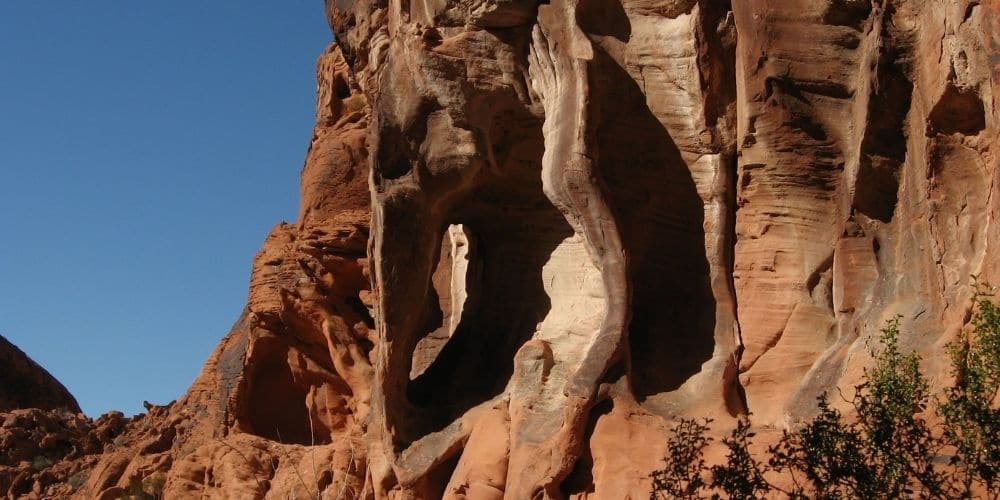
Mouse’s Tank is located at the head of Petroglyph Canyon, Mouse’s Tank was named after a Southern Paiute Indian named “Little Mouse”, who nearly escaped from his pursuers after being accused of killing two prospectors (as well as other crimes) in the 1880s by hiding in the Canyon.
Elephant Rock
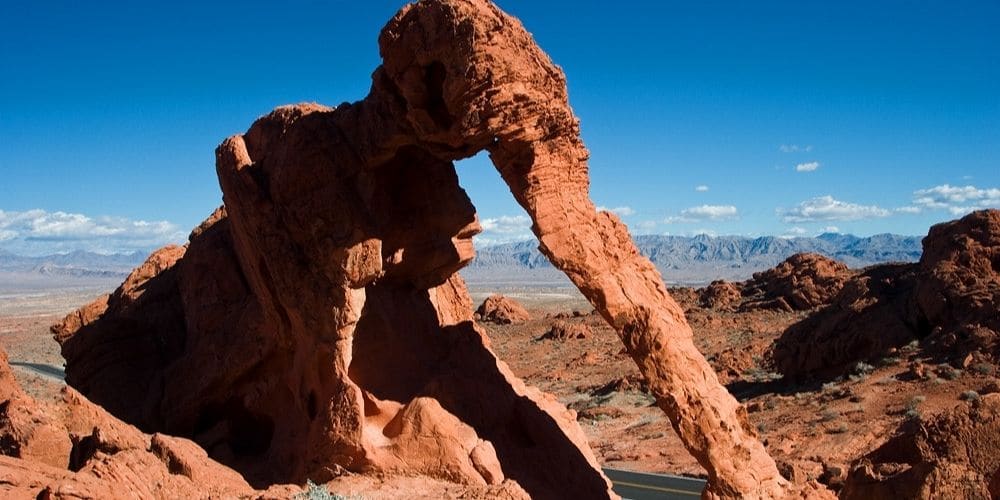
Elephant Rock looks just like – you guessed it – an elephant. It’s located close to the park’s east entrance, about a ⅓ mile hike from the main parking area.
Discover more Valley of Fire viewpoints:
Explore the Valley of Fire
Ready for a trip to the Valley of Fire? Get up close and personal with the iconic red formations on our SUV tour.


